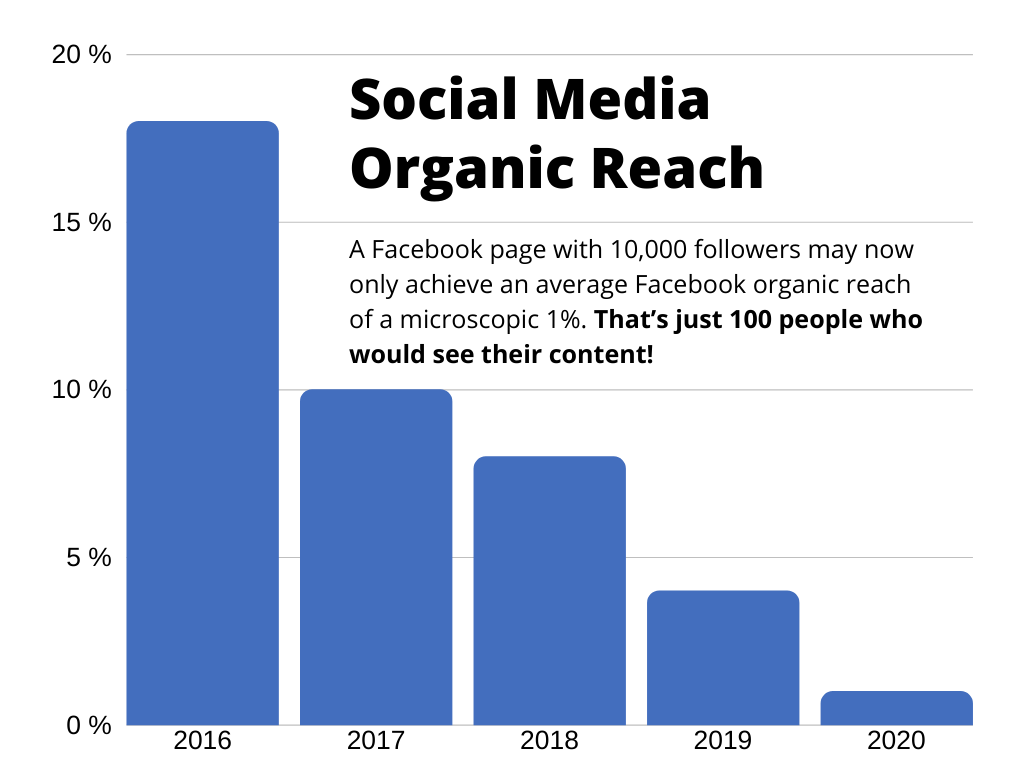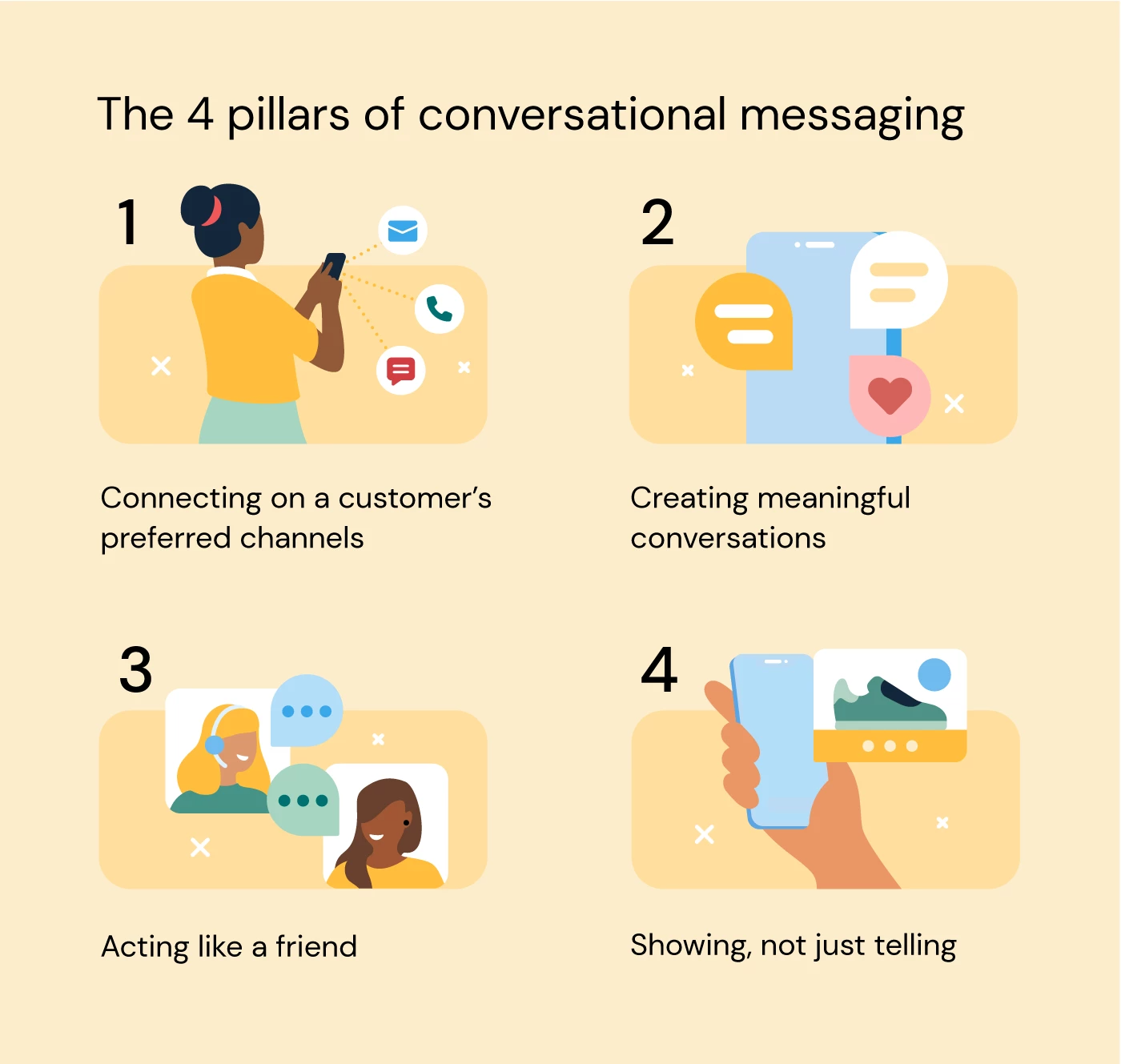Marketing
Should brands use social media for customer communication?

Marketing

Compared to many other options, social media communication is still fairly fresh. Facebook got started 20 years ago, which seems like a long time. But email first emerged back in 1971. As for the printing press and passenger pigeons? Well, it’s been a minute, that’s for sure.
Businesses and brands both large and small certainly see social media communication as a worthwhile investment. However, when we surveyed consumers from the U.S., UK, France, Germany, and Spain, we made an interesting discovery…
Preferences for hearing from brands on social media dropped sharply since we conducted similar research back in 2021. So, what’s going on here?
In the introduction of our report, The path to email engagement 2024, we call out this disparity immediately. While more than 50% of consumers selected social media as a preferred channel in 2021, that number plummeted to just 15.8% in 2023.

According to our research, consumers’ preference for hearing from brands via promotional SMS seemed to stay basically the same over the last few years. Meanwhile, the email channel skyrocketed, and social media dropped dramatically. It sure looks like email benefited from this change of opinions among everyday consumers.
We’re not going to lie… As an email service provider, it’s nice to see our favorite marketing and communication channel get a little love. Yet, we also understand the value of social media as part of a digital marketing mix.
Before we figure this out, let’s compare email and social media.
Once upon a time, people often used emails to communicate with friends and family. That may be hard for some to imagine now. There was a time, however, when even if you could text people, it was pricey, and your limited data plan would take a hit.
Then social media came along. Suddenly, there was this amazing new way to connect with people, share things, and get feedback. It was (as we’d come to find out) addicting.
Despite the prevalence of social media communication, email did not die. It just evolved. Here’s a comparison of how people use email vs social media today:
|
Email |
Social media |
|---|---|
|
Email is ideal for promotional and transactional messages that connect brands and consumers in useful ways. |
Social media is ideal for connecting and communicating with friends, family, celebrities, and public figures. |
|
Consumers opt-in to receive promotional messages, which may be filtered into a specific tab/folder. |
Brands target groups of consumers with ads based on an individual’s perceived interests and online activities. |
|
Mailbox providers use spam filters and sender reputation scores to determine what reaches their users’ inboxes. |
Social media platforms use algorithms that determine what ends up in their users’ feeds. |
|
Email addresses are often used as a digital identifier, allowing you to log in to accounts, applications, and devices. |
Social media handles are part of your online identity and are sometimes used to access accounts and applications. |
|
Email newsletters deliver hand-picked content from brands and publishers directly to subscribers’ inboxes. |
Social media newsfeeds sometimes include content from brands and publications people follow. |
Of course, there’s no such thing as “email marketing vs social media.” It’s not a competition. Most brands are trying to get the most out of both for marketing and customer communication.
Email and social media represent two different types of networks. One big difference is that email is more of an open network. You can send a message to someone from Gmail to Yahoo Mail, for example. But you can’t post or send a message on LinkedIn that ends up on Instagram.
Networks are most valuable when you have lots of people using them. Work email wouldn’t be that useful to you if you were the only one in the company with an email account. Likewise, if you’re still visiting your Myspace page, you’re probably not getting a lot of value from it.

In the early days of social media, platforms spent a lot of time convincing both consumers and brands to join their networks. If all your friends and favorite celebs were tweeting, you didn’t want to miss out. And if a ton of consumers were using a social media platform, brands wanted to be there too.
That’s why you’ve probably heard it said that you (as a consumer) are not a customer of Facebook, LinkedIn, TikTok, Instagram, and all the rest. You are the product being sold to brands. That’s why social media is free to join.
At this point, it might be clear why consumer preferences have shifted away from social media. But it wasn’t always this way. Now, many brands are using different methods to connect with consumers through social media, and they’re doing it in a way that’s more like email.
First, let’s find out where things went wrong for social media communication. Then, let’s explore how your brand can still use social channels to connect with customers.
When brands got the privilege of joining consumers on social platforms, it was almost like a form of permission-based marketing. Unfortunately, it didn’t stay that way.
In the beginning, when someone liked or followed a brand, it was like an invitation into their newsfeed. People wanted to hear from that company because they were interested in them as well as what the brand had to share.
Brands and publishers alike responded by posting all sorts of stuff on social media. They shared links to articles and videos, made funny jokes, and interacted with fans. Customer service employees used social channels to answer questions and solve problems.
Plenty of small businesses used their social accounts to communicate everything from hours of operation to menu changes and special events. Some even opted for a Facebook page over an actual website (not recommended). Of course, companies also posted promotions and tried to use organic social posts to boost sales.
When social media introduced targeted advertising opportunities – everything changed. This alone wasn’t necessarily a bad thing. Ad spend is more effective when you’re able to reach the right audience, and targeting means consumers are more likely to see social ads that are relevant to them. Sounds great, right?
The problem is, we’ve all seen a lot less organic content from brands in our feeds. Selling advertising is the business model for most social platforms. That means, not only do social media companies want brands to pay to reach people, but they also want consumers to stay on social media. That way, people can view and click on more ads.

Courtesy UCo Learning Network
Slowly but surely, as most marketing teams are painfully aware, the ability to reach fans and followers without paying for it has become a lot harder. You may have also noticed you need to spend more advertising dollars to reach an audience with targeted ads and getting results isn’t as easy as it was 10 years ago.
Here’s where we are finally getting to the likely reason behind the decline in social media preferences:
When it comes to brands and consumers, it’s not about communication and connection anymore (at least in the newsfeeds). Social media is almost exclusively for advertising. If a brand must pay to reach its audience, most will spend that money to boost sales, not social engagement.
What’s more, most newsfeeds are now full of ads from brands people never chose to like or follow. Those likes and follows are simply used to let other advertisers know more about you. That means you may be more likely to see ads from your favorite brand’s competitors.
This is not at all like permission marketing. This is interruption marketing – plain and simple. Thankfully, there are still opportunities to drive meaningful connections with social media.
If someone wants to use their smartphone to send messages directly to other people, there’s now a wide variety of options available:
You’ll notice that Meta owns three of these messaging platforms, and some are more popular in specific regions of the world.
Of course, there are other social platforms that include messaging features. The applications mentioned above, however, represent channels that brands can use to communicate with customers and prospects. This form of communication is very different from connecting with consumers through a traditional social media post with comments and reactions.
When your brand uses messaging apps to communicate, it becomes a much more personal, one-to-one experience. Instead of blasting a mass email or posting to Facebook and hoping for some reach, messaging apps enable a conversational customer experience.
Conversational messaging is what enables conversational marketing over these applications. When used as a customer service tool, messaging apps make it easy for people to work with a brand in real-time. It’s also possible to use chatbots to automate a friendly back-and-forth dialogue with customers. Consumers can even use messaging apps to make purchases.
This is known as conversational commerce. As the team at Sinch explains it, the approach is based on these principles:

In some ways, conversational messaging has advantages over traditional email marketing. People typically get an immediate response as well as the ability to ask questions and take certain actions without leaving the application. Many email communications from brands arrive from a no-reply email address. That definitely doesn’t deliver a two-way, conversational experience.
Even though they happen on some of the same platforms, social media marketing and conversational marketing through social messaging apps have distinct differences:
The first step in implementing a mobile messaging strategy is getting people to opt in. For example, let’s say you want to reach people on the most popular messaging app in the world, WhatsApp. There are no ads on WhatsApp. However, you can create click-to-chat links for WhatsApp, which can then be placed on your website, in pop-ups, as QR codes, or used in ads on Facebook and Instagram.
So, should your business use social channels to communicate with customers? While social media is certainly a viable ad platform, simply posting to your account won’t be a very effective way to connect.
Want to take advantage of social media today? Perhaps the best way is to start making those one-to-one connections through social messaging apps like WhatsApp, Messenger, and Instagram DMs.
We’ll always believe in the power of email. But there’s no reason to pick just one channel. You need to decide what works for your customers and your strategy. B2C email marketing campaigns have their place in the mix, and so does social media.
The digital landscape is going to keep evolving and your job as a smart marketer is to change with it. Right now, that might mean considering a multi-channel approach to your marketing and communication strategy. Find out more about the solutions Sinch provides.